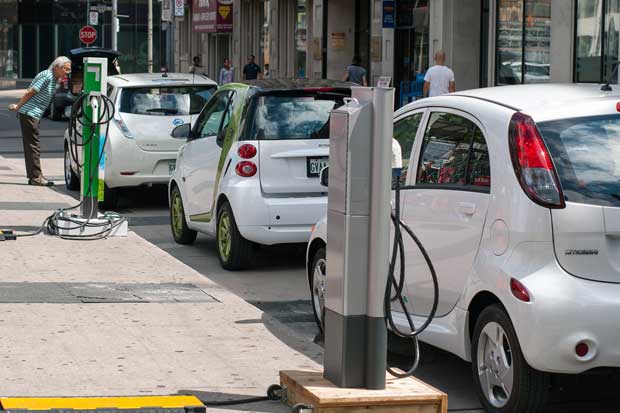23 November 2015
Plug-in electric hybrid cars to be ‘darling of the alternative fuel market'
Demand for plug-in electric hybrid cars will make them ‘the darling of the alternative fuel market' towards the end of the decade, according to Chris Blakely, of the consulting arm of automotive experts CAP.

With more than 42,000 vehicles registered so far, availability of the £5,000 Plug-In Car Grant has made the UK one of the leading markets in Europe for electric vehicles.
So far this year there have been 22,820 plug-ins and pure electric vehicles registered - a 228% rise over the same period last year, according to the Society of Motor Manufacturers and Traders.
However the majority of those new registrations (15,183) have been petrol or diesel-electric plug-in hybrids, an increase of 173.8% on 2014.
Early next year the government is expected to introduce changes to the structure of the grant. The changes are expected to be announced in the Autumn Statement on Wednesday (25th November). They are likely to be linked to a new three-tier structure which will have different categories based on carbon dioxide (CO2) emissions and electric ranges instead of today's flat under-75 g/km of CO2.
The new grant structure is expected to be in place until 2020 with CAP Consulting forecasting that pure electric vehicles will not match the meteoric rise of petrol/diesel-electric plug-in hybrids.
Highlighting the availability of two versions of the same vehicle - Volkswagen’s e-Golf (£32,980 excluding the Plug-in Grant) and Golf GTE, (£30,814) - more than 18 times as many GTEs have been registered than the e-Golf to October 2015 (1,206 versus 67 units).
As well as the e-Golf being more expensive, CAP highlights that when the cars enter the used market there is a clear lack of demand for pure electric vehicles.
CAP Black Book data (November) shows that despite the initial extra layout of over £2,000 for the e-Golf at 12 months and 20,000 miles it has a value £5,000 less than the Golf GTE.
Mr Blakely said: ‘Used buyers would prefer to pay £5,000 extra for the Golf GTE, and having the option of using it as either an electric vehicle or a conventional internal combustion engine vehicle. The Golf GTE also has a more radical, sporty specification; the e-Golf is unable to offer this because of the need to be as efficient as possible to extend its electric driving range.’
Furthermore, said Mr Blakely, company car drivers that choose a pure electric vehicle lose out on mileage rates because they are only allowed to claim back the ‘actual cost’ of charging their vehicle, according to HM Revenue and Customs’ rules.
Conversely plug-in electric hybrids users such as the Golf GTE can claim back 11p per mile and traditional petrol/diesel engines such as a 1.6 TDi Golf can claim back 9p per mile using Advisory Fuel Rates.
Mr Blakely said: ‘When users make an expense claim for their pence per mile they can often make a profit - especially on the high 11p per mile rate. This is a further area where the current system works against pure electric vehicles and reduces their popularity on business fleets.’
He concluded: ‘UK legislation provides an environment for electric vehicles to flourish nonetheless. When pure electric vehicles share the same benefits as plug-in hybrids with no added advantage consumers are always likely to choose the convenience of a plug-in hybrid.
‘Towards the end of the decade all electric vehicles’ company car taxation advantage is to be reduced with the percentage of list price subject to tax rising from 7% in 2016-2017 to 16% in 2019-2020. With this in mind, will the growth of the alternative fuel market maintain its growth as the long list of legislative incentives become more stringent?
‘With all these current and future factors affecting the growth of the pure electric vehicle market, it’s easy to see why the plug-in electric hybrid is, and will continue to be, towards the end of the decade, the darling of the alternative fuel market.’

